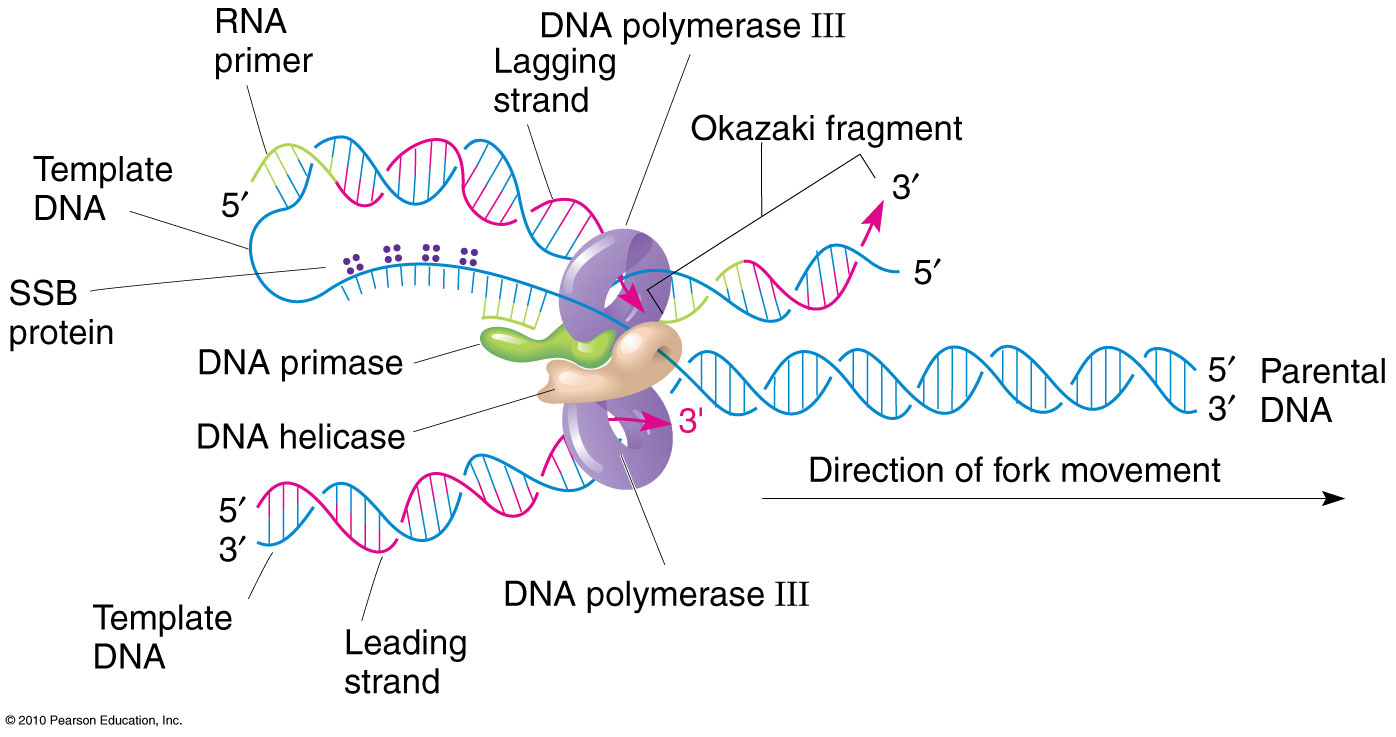
Leading &
Lagging
strand synthesis uses a single, dimeric DNAPol III enzyme
Models of
DNA
synthesis often show it as occurring independently on the
leading and
lagging
strands, with separate DNAPol IIIs on each. However,
replication
at any one
fork is under the control of a single,
dimeric DNAPol
III holoenzyme [the two donut-shaped
rings] that replicates both parental DNA
strands simultaneously.
The process occurs
consistent with the requirement that new strand synthesis
always occurs 5'![]() 3'.
3'.
Synthesis
off the leading strand
(below, blue) occurs in the 5'![]() 3'
direction, which is oriented towards the replication fork
(lower DNA molecule,
red strand).To achieve the same orientation on
the lagging strand, the
lagging strand loops around the subunit
(above, blue). This
allows either parental strands to enter the
alternate subunits of the polymerase in
the same 5'-
3'
direction, which is oriented towards the replication fork
(lower DNA molecule,
red strand).To achieve the same orientation on
the lagging strand, the
lagging strand loops around the subunit
(above, blue). This
allows either parental strands to enter the
alternate subunits of the polymerase in
the same 5'- 3'
orientation as well as the
same right-to-left
direction. It also means that lagging strand synthesis will
trail a series of Okazaki fragments as succesive segments of
the parental strand pass through the polymerase.
3'
orientation as well as the
same right-to-left
direction. It also means that lagging strand synthesis will
trail a series of Okazaki fragments as succesive segments of
the parental strand pass through the polymerase.
[If you
imagine the top subunit rotated 180o to the left,
the Okazaki fragments will be directed away from the
replication fork, in the manner seen in the simplified
diagrams]